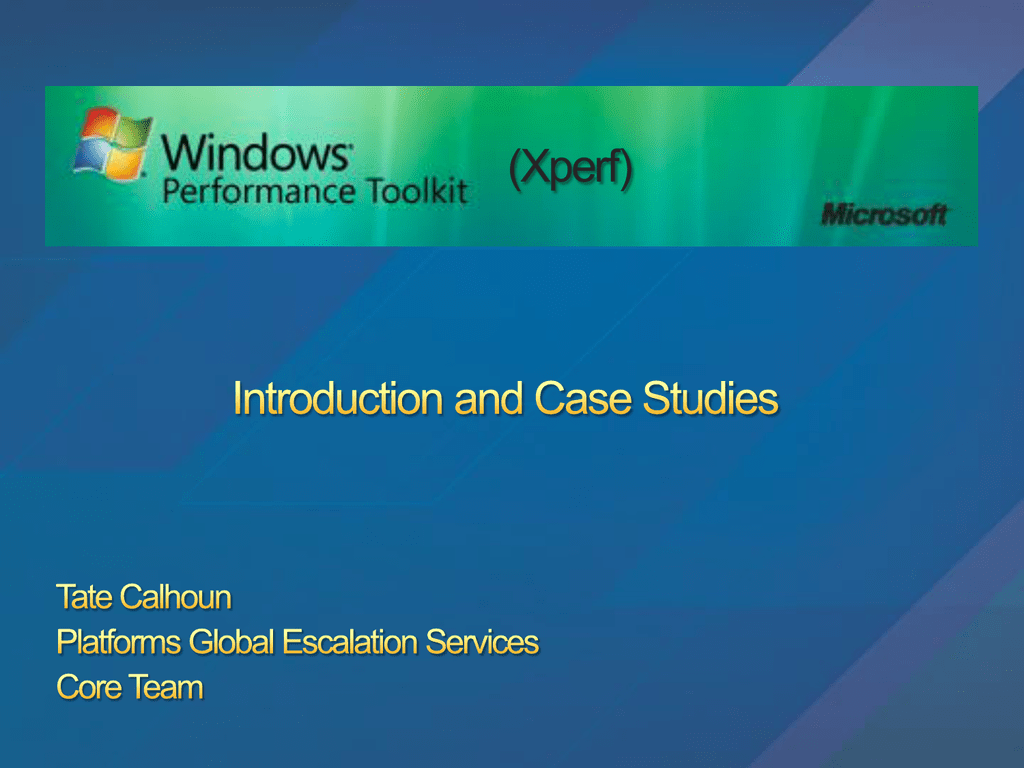
Click on the thumbnail to get a larger view.Īs you can see, it is really detailed and extremely easy to use. Here is an example screenshot of the type of information that WPA displays.

The zooming is important as without that you are not told which process is utilizing that CPU.

ETL file on your laptop, it should open up in the Windows Performance Analyzer (WPA) utility. A LOT of information is collected, so limit the duration. Collect data for not more than 30-45 seconds.Use the Windows Performance Recorder utility to record a trace with just CPU in it.Redistributable versions should get installed as well at C:Program Files (x86)Windows Kits8.0Windows Performance ToolkitRedistributables (notice the ARM target is now available as well!).
Windows performance toolkit useful install#
Download and install the Platform SDK ( ) and choose the install the Windows Performance Toolkit.Today, with XPerf (part of Windows Performance Toolkit) you can get this information fairly easily and accurately. The extension command !pcr or !prcbwill give you the current thread for that processor, which you can use with !thread to get the process object.)īUT no customer will let us do a live kernel debug in production unless it is really necessary. So classically, a live kernel debug would be required to be sure. And by definition purely in user mode one cannot find this information, because the OS dispatcher schedules threads, not processes and the dispatcher runs at a lower level than user mode threads do.

Well, he already figured that Task Manager or Process Explorer does not provide that information. A colleague of mine recently asked the question ‘I see CPU N is constantly pegged at 100% is there any good way to determine which specific process is using that specific CPU?’


 0 kommentar(er)
0 kommentar(er)
